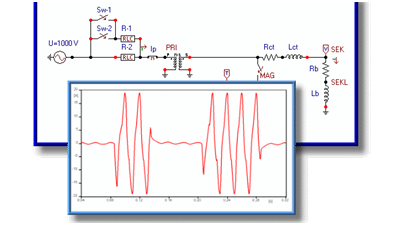We electrical engineers have our own glossary so when we see the word FACTS we know that it doesn’t mean the things that are indisputable, but Flexible Alternating Current Transmission Systems.
My name is Yasser and I want to go back to the basics with the Flexible Alternating Current Transmission System. Enjoy!
Why FACTS controllers?
The evolution in power electronics regarding high current and voltage is very obvious which reduced the cost of energy in many applications by many ways including transmission of current over very long distances and reduction of the cost in renewable energy applications.

Figure.1 some of the FACTS controllers | image: slideplayer.com/slide/4403126
Capitalizing this evolution is one of the main goals FACTS controllers care about so the flow of power is now always controlled at transient and steady state conditions.
There are also many benefits from using FACTS controllers including:
- Increase:
- the security of the power system
- reliability
- the power transfer capabilities PTC
- the overall quality of the electric energy to consumers
- Reduce:
- the operation investment cost
- the transmission investment cost
Where can we find FACTS controllers?
Commissioning of FACTS controllers differ from location to another around the world. Here are the most common parts:
- Compensators:
- Static VAR
- Static
- Thyristor controlled series
- Controllers:
- Unified power flow
- Interphase power
- Phase angle regulators
- Tap changers
How can we measure the effectiveness of FACTS controllers?
There are many analysis tools that can determine using the following factors:
- Power quality
- Optimal, 3-phase and positive sequence power flow
- State estimation
- Electromagnetic transients
- Dynamic and transient stability

Figure.2 screenshot of the transients using analysis tool | image: emtp-atp.de
As we just mentioned above there are FACTS controllers for transient and steady state. We will discuss some of those who are intended for steady state:
- Interphase power controller: For the separation of the magnitudes of voltages and phase shifting them that doubled branched series controller is used where one of the branches is capacitive while as the other is inductive. In addition, the sources of shifting phase and the 2 variable reactances don’t effect the active power P which is independent on Q.
- Thyristor controlled:
- phase shifter: this phase-shifting transformer provides variation of the phase shift be making use of the switching feature of the thyristor
- reactor: By controlling the valve of the thyristor using partial conduction this shunt reactance is continuously varied
- series capacitor: for providing variable series compensations this reactor which a combination of series capacitors in parallel is used
- Load tap changer: In the case the thyristor switches are used to control the tap changes we may count this a FACTS controller.
Conclusion
There are many and many FACTS controllers that we didn’t have the chance to discuss here and there will be others to be developed in near future. So the more you are up to date with this amazing technology, the more you will save your money, reduce your cost and safe the power system.
Thanks for reading my essay,
Yasser.
Did this back to basics article about FACTs help? Ask your questions or submit your comments below.